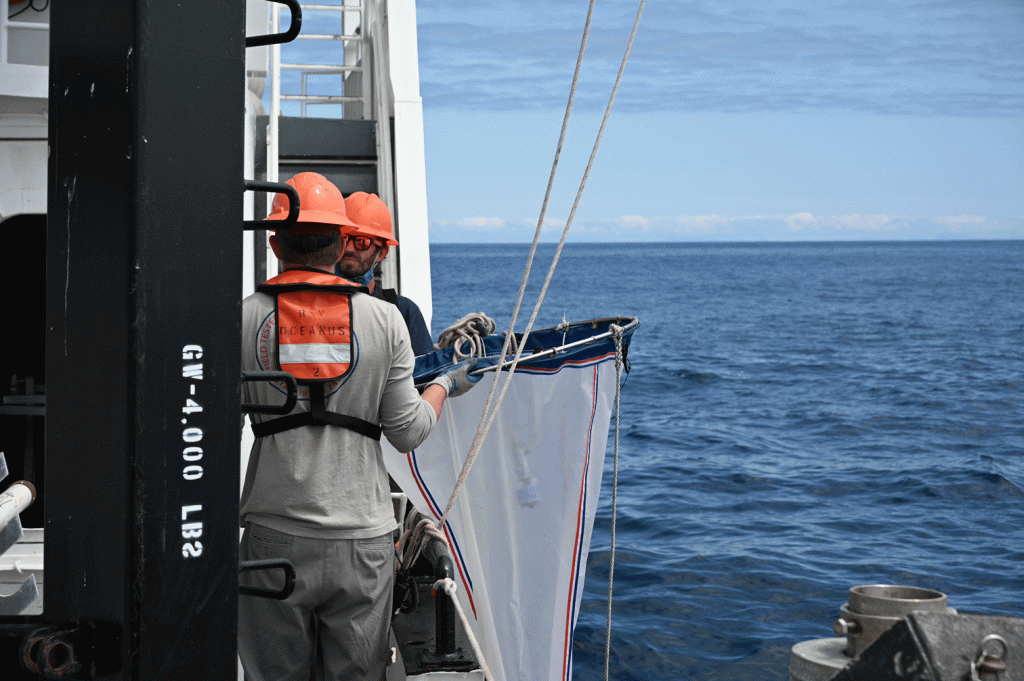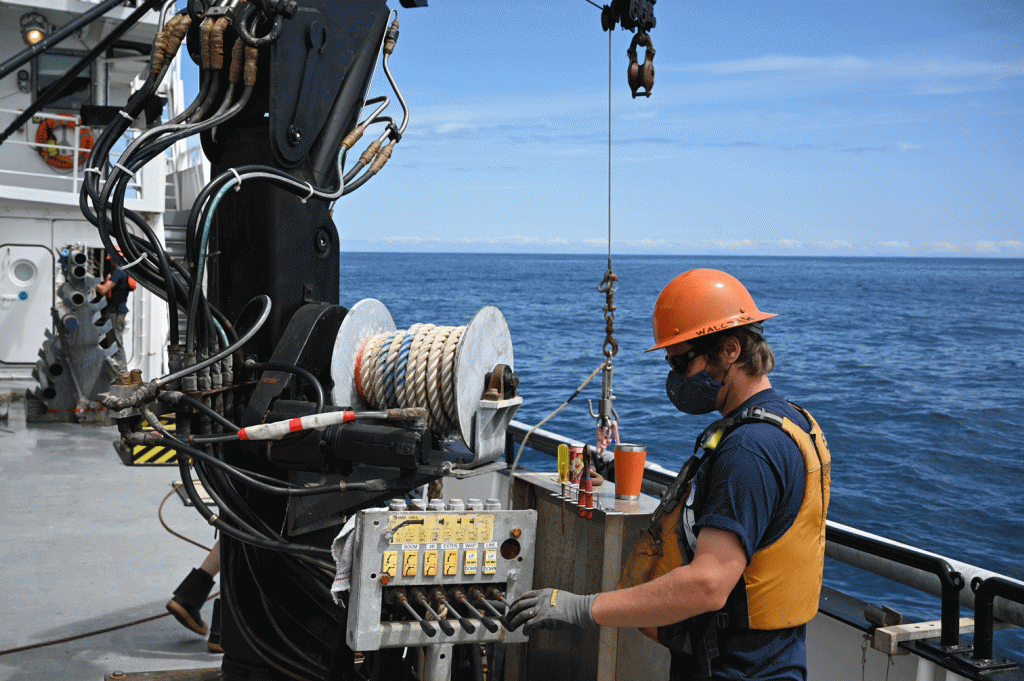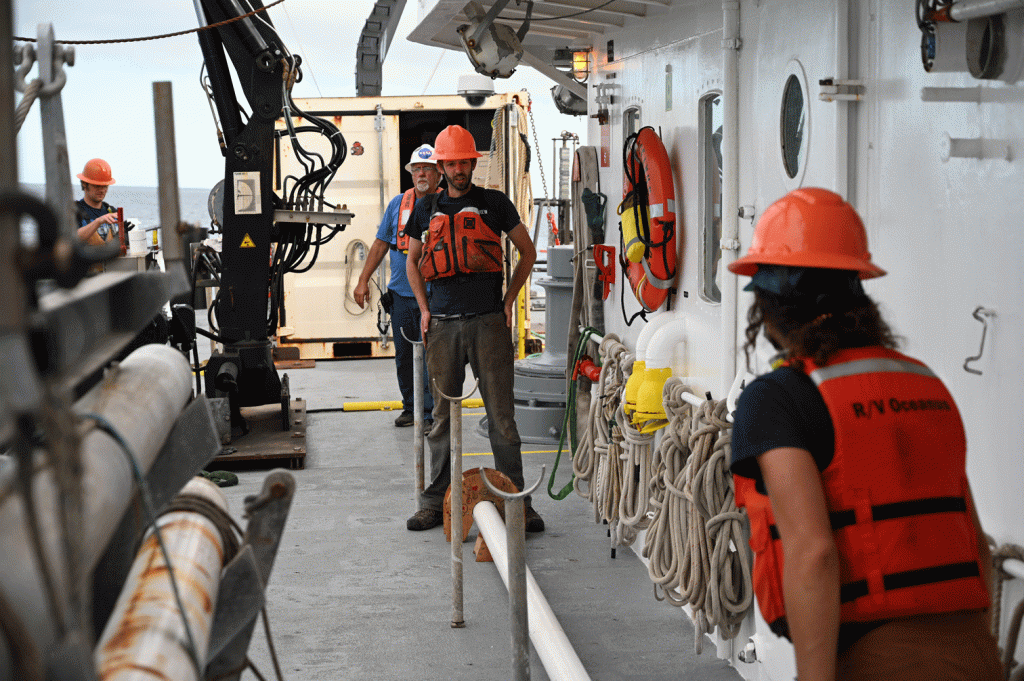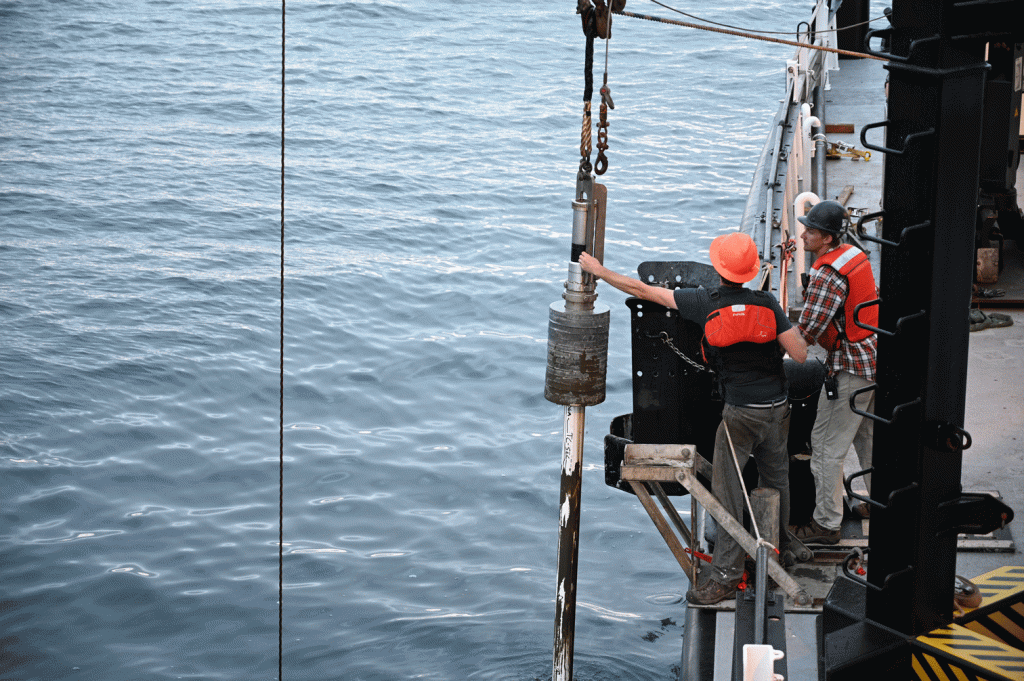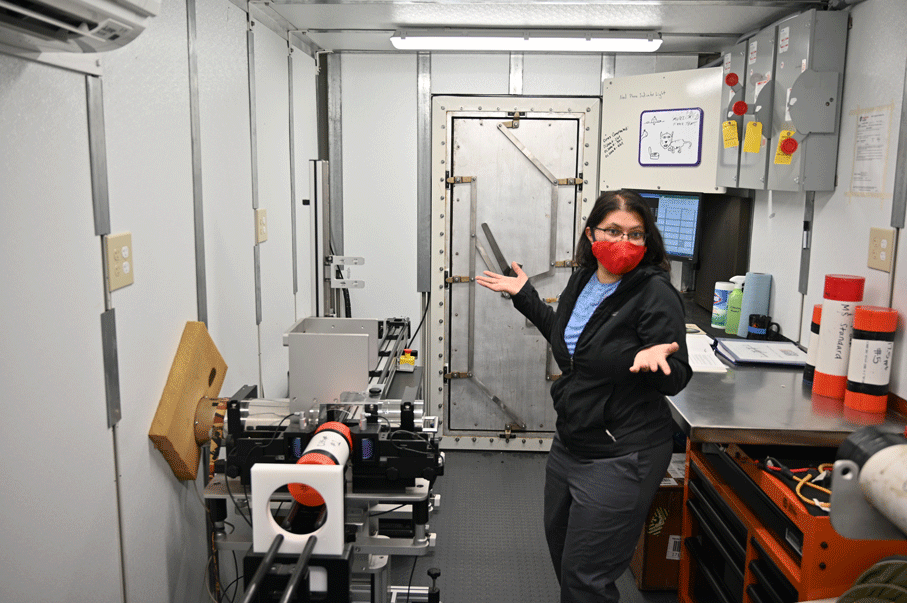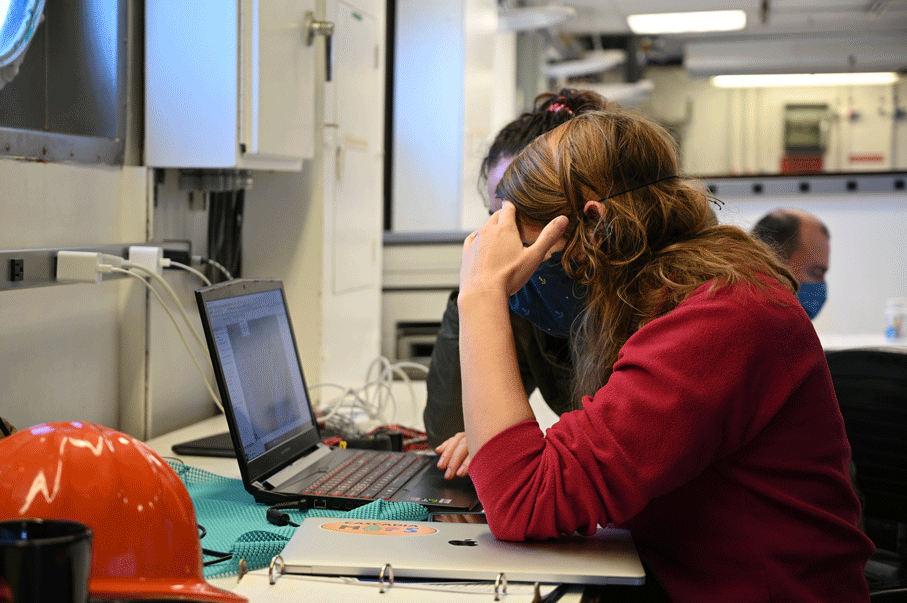It is the third day of the Cascadia HOPS expedition and I’m amazed by how much we’ve accomplished so far.
On Tuesday we left Newport and headed to our first station. After a slight setback, we reached our first station close to midnight and began our first coring operations. Our goal was to reoccupy a site we cored with multiple jumbo piston cores in 2017 and recover fresh materials that could be used to study the location’s pore water geochemistry. A sediment’s pore waters are chemically different than the ocean water above as they are modified by microbes as they eat organic matter in the sediments. We were interested in changes in the upper couple meters, so we rigged and deployed two small gravity cores that could recover 2 meters of sediment without too much disturbance. And then deployed a multi-core to capture a pristine sample of the upper half meter.
Following those operations, we transited to our first piston coring station just north of the Astoria Canyon on the Oregon continental slope. On the way we tagged another multi-core to study surface sediments near the head of the Astoria Canyon. There, we surveyed using the CHIRP system that lets us image the upper sediments at the seafloor and identified a site with an expanded Holocene (~10 thousand years) unit. There we completed our first ‘Giant’ gravity coring and piston coring operations. The piston core hit hard and blew through the upper few meters, but luckily the gravity core did a nice job recovering those sediments, providing continuous recovery between the two cores.
Following that site, we transited north to our most northern planned site off the Washington Margin. Along the way we found some beautiful deposits that I think we’ll go back to before this cruise is over. We made it to our planned site and started the survey there. But no luck! The sediment deposit was not what we hoped for. Luckily, we had a nearby alternate that turned out to be better than we expected. We expect that it will have a nice record spanning the last deglaciation from the last ice age. So we started with a piston corer and recovered sediments that filled the barrel all the way to the top. Excited, we rigged an even longer piston core and filled that one all the way to the top as well! Needless to say, Mo, me, and the whole science party were thrilled and can’t wait to get home and split it.
We finished the day by surveying the top of another canyon on the Washington Margin and sampling sediments with a multi-core. Tomorrow we are planning to start coring operations around 630 AM. Hopefully our luck continues!
